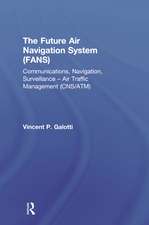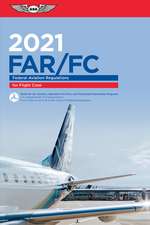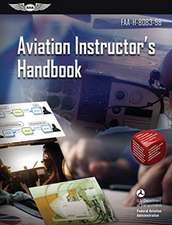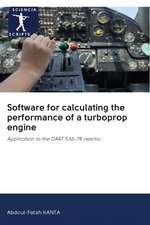Liquid Acquisition Devices for Advanced In-Space Cryogenic Propulsion Systems
Autor Jason William Hartwigen Limba Engleză Hardback – 26 noi 2015
The book presents models and experimental data based on rare and hard-to-obtain cryogenic data. Through clear descriptions of practical data and models, readers will explore the development of robust and flexible liquid acquisition devices (LAD) through component-level and full-scale ground experiments, as well as analytical tools.
This book presents new and rare experimental data, as well as analytical models, in a fundamental area to the aerospace and space-flight communities. With this data, the reader can consider new and improved ways to design, analyze, and build expensive flight systems.
- Presents a definitive reference for design ideas, analysis tools, and performance data on cryogenic liquid acquisition devices
- Provides historical perspectives to present fundamental design models and performance data, which are applied to two practical examples throughout the book
- Describes a series of models to optimize liquid acquisition device performance, which are confirmed through a variety of parametric component level tests
- Includes video clips of experiments on a companion website
Preț: 814.68 lei
Preț vechi: 1059.18 lei
-23% Nou
Puncte Express: 1222
Preț estimativ în valută:
155.88€ • 162.76$ • 129.02£
155.88€ • 162.76$ • 129.02£
Carte tipărită la comandă
Livrare economică 28 martie-11 aprilie
Preluare comenzi: 021 569.72.76
Specificații
ISBN-13: 9780128039892
ISBN-10: 0128039892
Pagini: 488
Dimensiuni: 191 x 235 x 25 mm
Greutate: 1.16 kg
Editura: ELSEVIER SCIENCE
ISBN-10: 0128039892
Pagini: 488
Dimensiuni: 191 x 235 x 25 mm
Greutate: 1.16 kg
Editura: ELSEVIER SCIENCE
Public țintă
Industry/government and academic researchers in aerospace, mechanical, or chemical engineering (more specific applications to professionals specializing in surface chemistry, transport phenomena, thermodynamics, fluid mechanics, and heat and mass transfer)Cuprins
Chapter 1: IntroductionChapter 2: Background and Historical ReviewChapter 3: Influential Factors and Physics-Based Modeling of Liquid Acquisition DevicesChapter 4: Room Temperature Liquid Acquisition Device Performance ExperimentsChapter 5: Parametric Analysis on the Liquid Hydrogen and Nitrogen Bubble Point PressureChapter 6: High Pressure Liquid Oxygen Bubble Point ExperimentsChapter 7: High Pressure Liquid Methane Bubble Point ExperimentsChapter 8: Warm Pressurant Gas Effects on the Static Bubble Point Pressure for Cryogenic Liquid Acquisition DevicesChapter 9: Full Scale Liquid Acquisition Device Outflow Tests in Liquid HydrogenChapter 10: The Bubble Point Pressure Model for Cryogenic PropellantsChapter 11: The Reseal Pressure Model for Cryogenic PropellantsChapter 12: Analytical Model for Steady Flow through a Porous Liquid Acquisition Device ChannelChapter 13: Optimal Liquid Acquisition Device Screen Weave for a Liquid Hydrogen Fuel DepotChapter 14: Optimal Propellant Management Device for a Small Scale Liquid Hydrogen Propellant TankChapter 15: ConclusionsAppendices






















